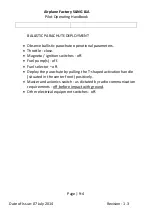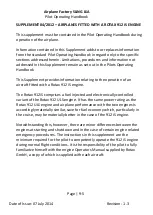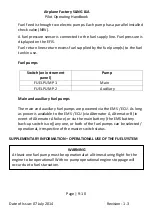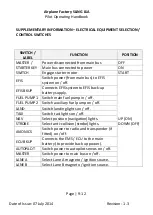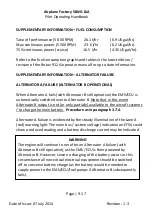
Airplane Factory SLING LSA
Pilot Operating Handbook
Page | 9-18
Date of Issue: 07 July 2014
Revision : 1.3
ALTERNATOR B FAILURE (ALTERNATOR A OPERATIONAL)
When Alternator B (with Alternator A still operative) fails no main battery
charging can occur. In this case the EMS / ECU remains powered via
Alternator A.
Procedure as in paragraph 3.7.4
Alternator B failure could be indicated by a drop in the main bus voltage
(displayed on EFIS) and a battery discharge current may be indicated.
ALTERNATOR A AND ALTERNATOR B FAILURE
This will result in engine stoppage (since no power is available to the EMS/
ECU). In this case the EMS / ECU must be powered from the main battery
(by switching on the EMS / ECU battery back-up switch).
Procedure as in
paragraph 3.7.4
WARNING
The engine will continue to run after an Alternator B failure (with
Alternator A still operative), as the EMS /ECU is still powered by
Alternator A. However, since no charging of the battery occurs in this
circumstance all non-critical electrical equipment should be switched
off to conserve battery charge (as the battery would be needed to
supply power to the EMS/ECU/fuel pumps if Alternator A subsequently
fails).
WARNING
The engine can run (with the EMS / ECU powered from the main
battery) after an Alternator A and B failure, until the battery voltage is
low (approximately 30 minutes, if all ancillary equipment is switched off
and provided that the battery is fully charged at the time of (the last
remaining) alternator failure). The engine will cease running due to fuel
starvation (due to electrical pump(s)/EMS/ECU stopping) when the
battery is depleted.

